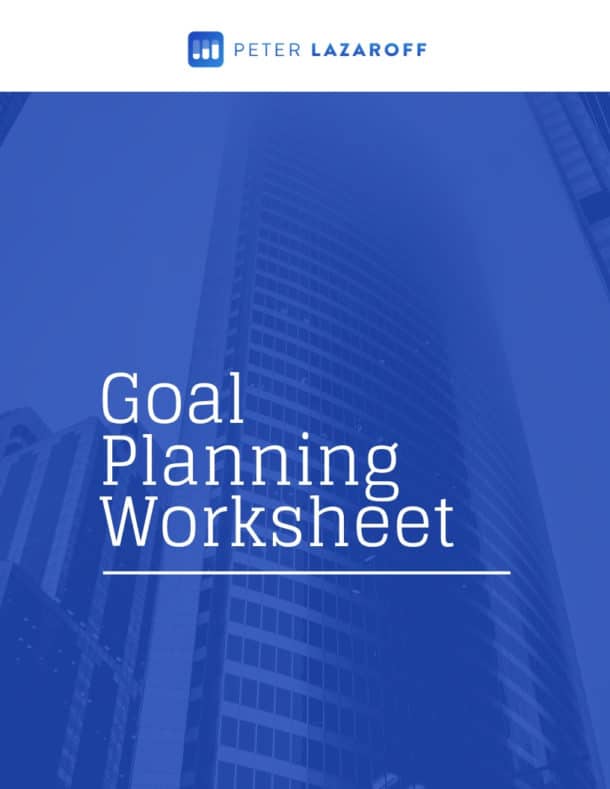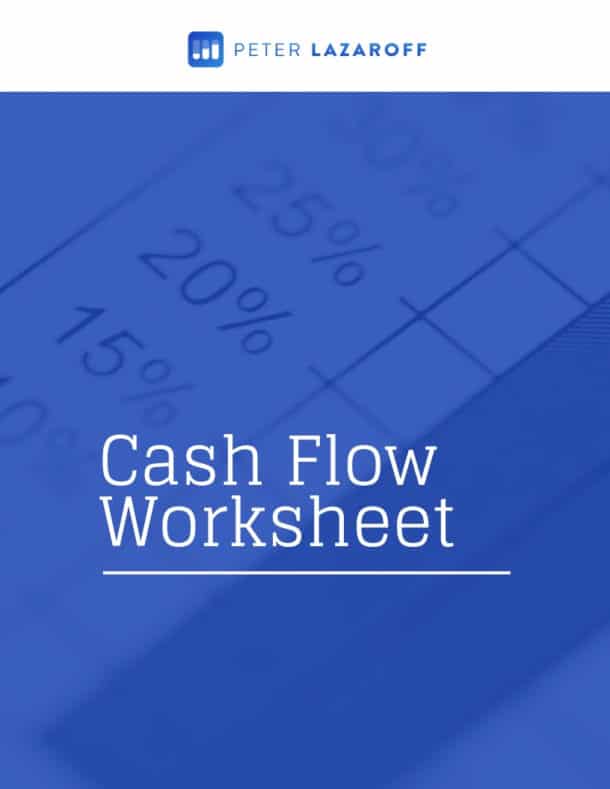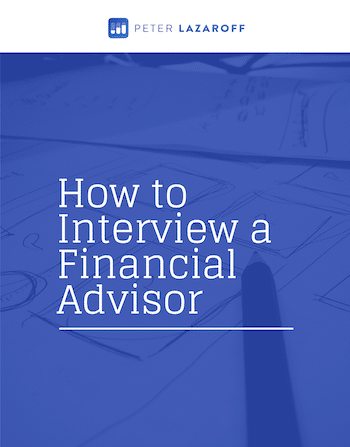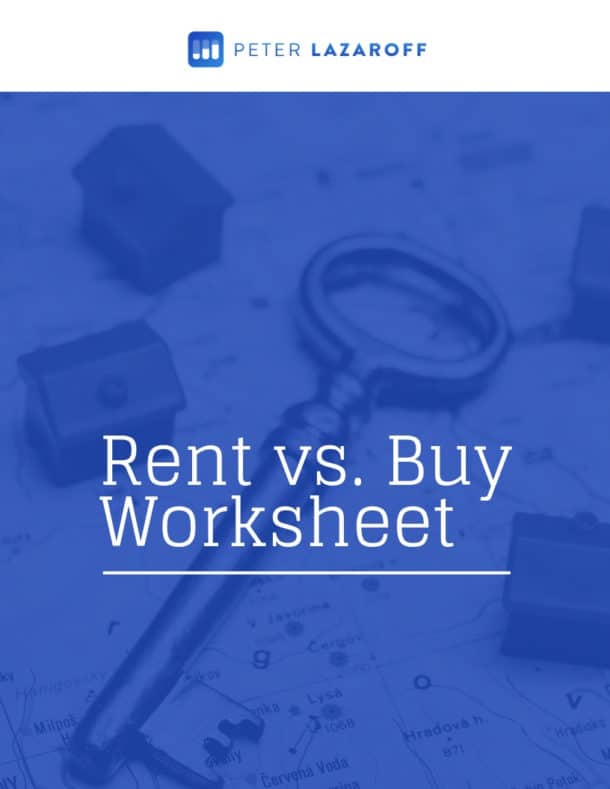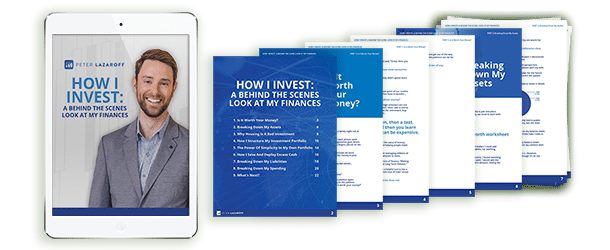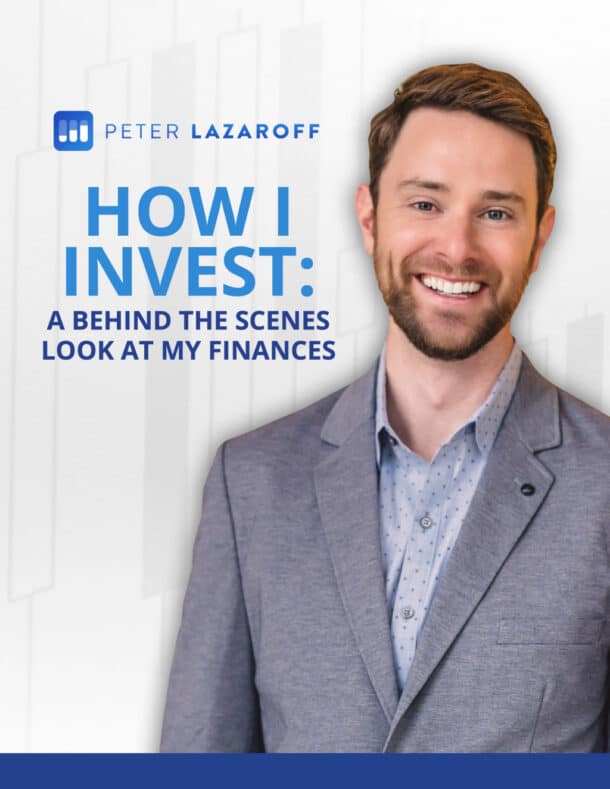This episode features Nick Maggiulli, author of the new book Just Keep Buying and popular blog Of Dollars and Data.
Listen now and learn:
- How to determine if saving or investing is more important
- How (and when) to invest your cash
- A unique way to frame the opportunity that exists in down markets
Watch Now
Listen Now
Show Notes
In this episode, I’m joined Nick Maggiulli, author of the new book Just Keep Buying: Proven Ways to Save Money and Build Your Wealth. This is one of the best personal finance and investing books I’ve read in quite some time, so be sure to get yourself a copy.
Here are some of my notes from our conversation…
The first time I ever read Nick’s blog, Of Dollars and Data, I remember being surprised to learn that Nick’s background wasn’t in finance.
When he started the blog in early 2017, he was working at a litigation consulting firm. He took some programming classes as part of his economics major and realized data analytics was his passion, so that type of litigation consulting was a great fit.
The blog was simply an application of his skills at analyzing situations with data to personal finance, which is something he has always loved.
3:40 – The Save-Invest Continuum
Using just two numbers, Nick tells a person where they are on the Save-Invest continuum, which informs where you should focus most of your attention.
- How much can you expect to save in the next year?
- How much could your investments earn in the next year?
If the amount you are saving is bigger, then you should focus more of your attention on saving more. If the second number is bigger, then you should focus more on optimizing your investments.
For example, if you save $500 a month, then you will save $6,000 a year. Now imagine you also have $20,000 in investments earning 5%, then your investments earn $1,000 a year.
Using the Save-Invest Continuum for this example, you can save more in a year ($6,000) than you can earn from your investments ($1,000), so you ought to focus more of your attention on saving.
This is common for people just starting out. They get out of college and have very little to start with, so they focus their efforts on increasing their income and saving more. As they progress, their investment earnings should rise such that you flip sides on the Save-Invest Continuum. By retirement, you’re all investing income.
The book is written such that you can read the entire thing or you can read sections based on where you lie on the Save-Invest Continuum.
7:00 – Investing in Individual Stocks
A big area where my investments differ today versus earlier in my career is the lack of individual stocks in my portfolio.
Nick addresses the difficulty of trading individual stocks in Chapter 12, but he doesn’t rely on a common argument that points to the failure of active management – if active managers can’t do it, then why would you be able to do it?
Nick’s argument in the book is more of an existential one. It’s easy to tell if someone is good at basketball after watching them for 20 minutes. An experienced basketball coach might be able to determine skill more precisely on the scale of terrible to LeBron James.
But identifying skills in stock picking takes 20 years. It’s impossible to know if you are good or bad, regardless of the outcomes.
Nick suggests that it’s fine to own a few individual stocks and even notes that he has a few himself for fun, but it’s not something you should do with the bulk of your wealth.
10:29 – How (and When) to Invest Cash
Nick wants to rebrand “dollar cost averaging” and “averaging into the market,” and I totally agree.
Dollar cost averaging simple means buying over time. It’s the best way to invest your regular income on an ongoing basis.
If you have a bunch of cash for whatever reason, the choice is whether you invest all at once in a lump sum or average into the market over time.
As Nick outlines in the book, buying now in a lump sum outperforms averaging into the market over the course of one year about 70% of the time. And the average outperformance equates to about 5%.
Investing as soon as possible gives you a higher probability for higher returns, but a lot of investors in this situation prefer average into the market. Averaging in over a period of longer than a year can leave a lot of return on the table. But averaging in over the course of 12 months only gives up 5% on average, so it’s not the end of the world if it helps you sleep better.
Risk matters, too. For example, if you’re trying to go 100% stocks, maybe you ought to start with a 60/40 mix of stocks to bonds and then transition over time.
The important thing to keep in mind about averaging into markets is that it works best when markets are falling, but that is behaviorally more challenging to execute.
15:44 – Reframing the Upside of a Crisis
Read more about this topic here on Nick’s blog.
Simple math shows why it makes sense to buy during a crisis. Every decrease in value requires a larger increase to get back to even.
If the market starts at 100 and falls 25% down to 75, it will take a 33% increase to get back to 100.
In March 2020, the market fell 33%. That means a 50% increase was needed to get back to even. How long you expected the market to take to recover would be the driver of your expected return:
- 1 year, then your expected annual return = 50%
- 2 years, then your expected annual return = 22%
- 3 years, then your expected annual return = 14%
- 4 years, then your expected annual return = 11%
- 5 years, then your expected annual return = 8%
There was no way to know when the COVID crash would end, but had you assumed in the moment that it would take five years to recover, you would still be expecting to earn an annualized return of 8%.
As long as you believe markets will recover and you have a reasonable timeline, you can then back out what your expected return and decide if it’s worth investing excess cash or reallocating some bonds to stocks during a market downturn.
22:24 – When to Sell Investments
The book is called Just Keep Buying, but there are times when you have to sell. Some of the reasons that Nick highlights in the book include rebalancing, tax loss harvesting, and meeting financial needs, and diversifying out of a concentrated position – we focused on that final reason.
Regardless of the reason you’ve accumulated a concentrated stock position, you want to minimize regret. If you sell your entire position and it quickly triples, you are going to feel bad if the market didn’t also triple. Similarly, if you don’t diversify out of a concentrated position and it crashes while the market doesn’t, then you’re also going to feel regret.
The important thing in determining how much to sell is to understand the risk you’re willing to live with and then sell over time according to a financial plan and tax budget.
24:50 – The Most Important Asset
Your most important asset is your time. Peter Thiel has a talk with a thought experiment that asks whether or not you would trade places with Warren Buffett. You would have all his money and network, but you’d have to be his age. Most people wouldn’t take that trade because they don’t want to be over 90 years old.
People realize this dynamic at the extremes, but it gets lost in everyday life. It’s important to figure out where you want to spend your time because that time is your most precious resource.
26:34 – Book Recommendations
- How to Retire Happy, Wild, and Free – Ernie Zelinski
- I Will Teach You to Be Rich – Ramit Sethi
- The Four Pillars of Investing – William Bernstein
- The Intelligent Asset Allocator – William Bernstein
- The Psychology of Money – Morgan Housel
- Your Money and Your Brain – Jason Zweig
- Deep Survival – Laurence Gonzalez
28:34 – What Does It Mean to Be a Long-Term Investor?
From Nick’s perspective, a long-term investor is someone who just genuinely believes in the progress of human civilization. The whole point of investing is that you buy something with the expectation that there will be growth and the price goes up.
You give up something now to have more later. If you didn’t believe in that, why would you be investing?
The data clearly shows that key metrics for humanity are moving in the right direction. So while there will always be drawdowns in markets and negative events in human civilization, the long-term trend is a positive one.
You can find Nick on Twitter @dollarsanddata or his website.
Resources
- Nick’s book: Just Keep Buying: Proven ways to save money and build your wealth
- Nick’s website: https://ofdollarsanddata.com
- Nick Maggiulli on Twitter
Submit Your Question For the Podcast
Do you have a financial or investing question you want answered? Submit your question through the “Ask Me Anything” form at the bottom of my podcast page.
If you enjoy the show, you can subscribe wherever you listen to podcasts, and please leave me a review. I read every single one and appreciate you taking the time to let me know what you think.
About the Podcast

Long-term investing made simple. Most people enter the markets without understanding how to grow their wealth over the long term or clearly hit their financial goals. The Long Term Investor shows you how to proactively minimize taxes, hedge against rising inflation, and ride the waves of volatility with confidence.
Hosted by the advisor, Chief Investment Officer of Plancorp, and author of “Making Money Simple,” Peter Lazaroff shares practical advice on how to make smart investment decisions your future self with thank you for. A go-to source for top media outlets like CNBC, the Wall Street Journal, and CNN Money, Peter unpacks the clear, strategic, and calculated approach he uses to decisively manage over 5.5 billion in investments for clients at Plancorp.
Support the Show
Thank you for being a listener to The Long Term Investor Podcast. If you’d like to help spread the word and help other listeners find the show, please click here to leave a review.
Free Financial Assessment
Do you want to make smart decisions with your money? Discover your biggest opportunities in just a few questions with my Financial Wellness Assessment.










